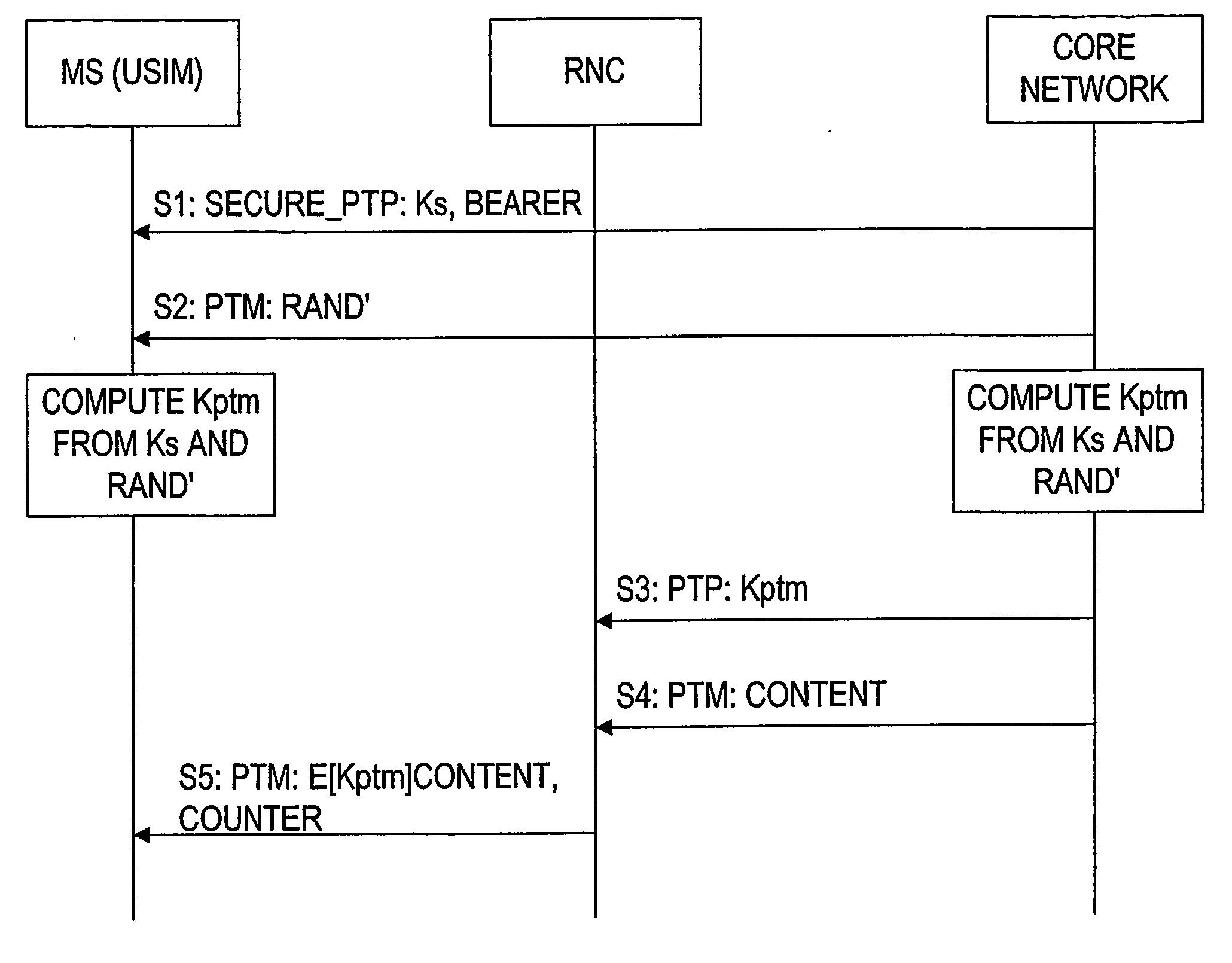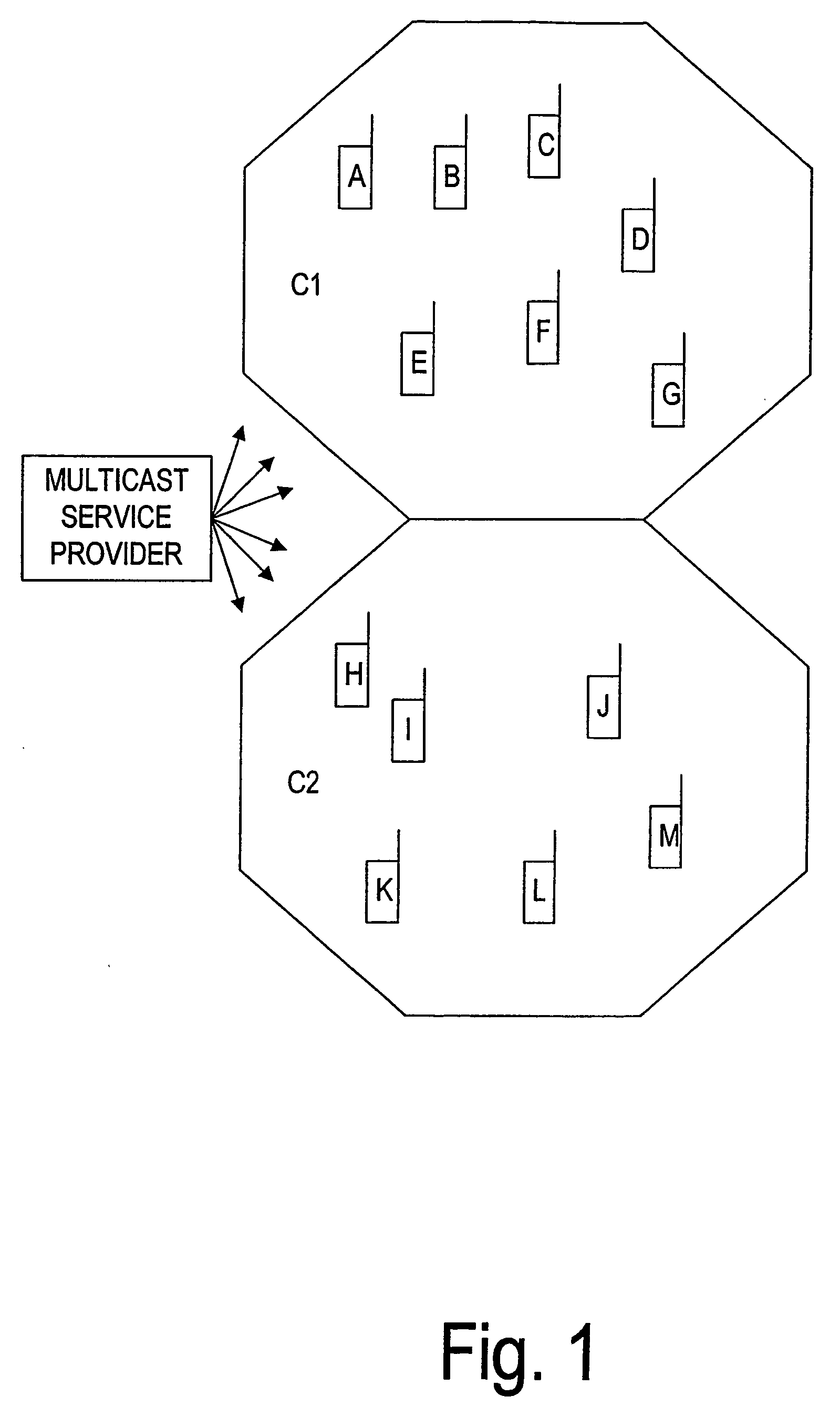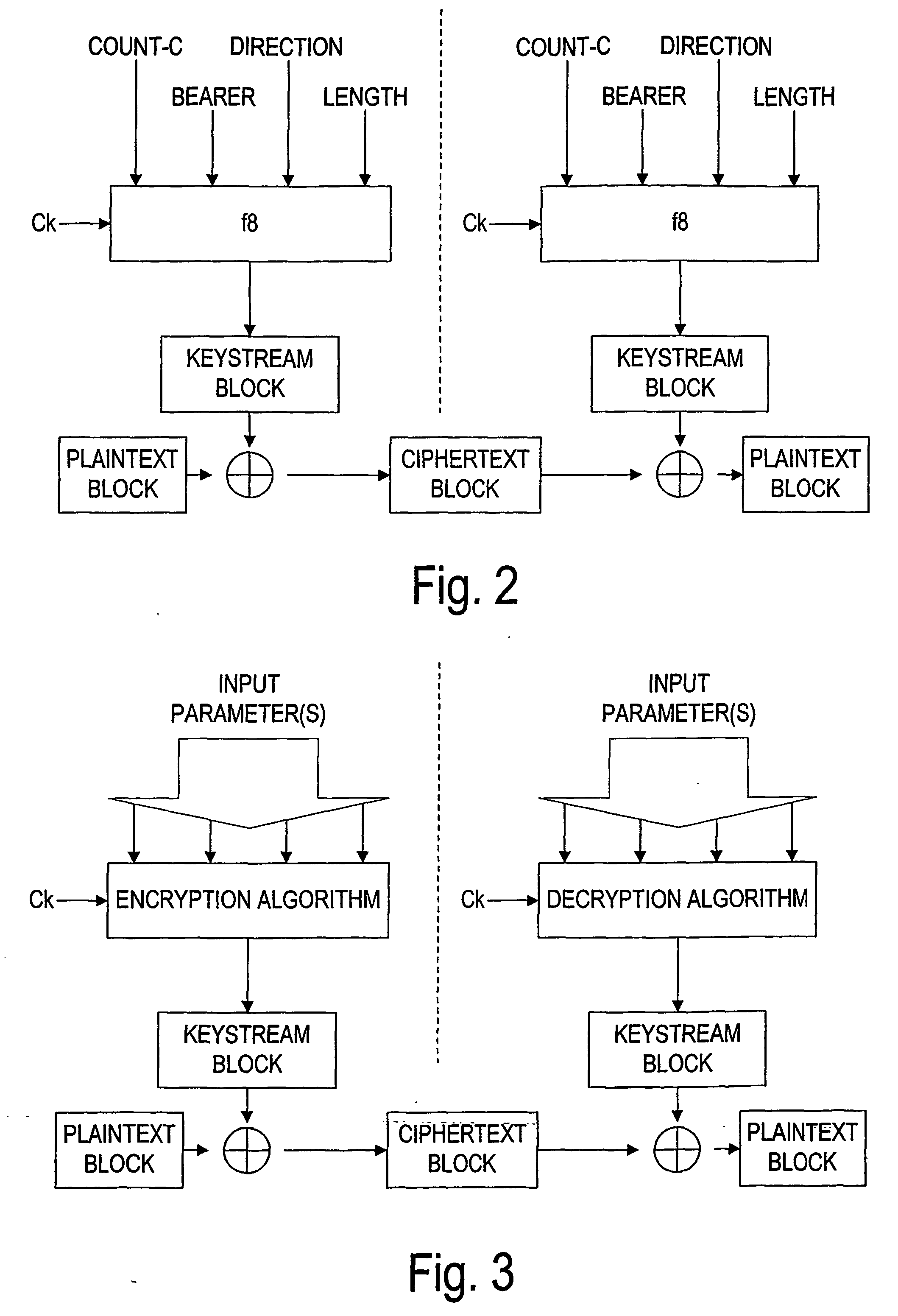Ciphering as a part of the multicast concept
a multicast concept and ciphering technology, applied in the field of transmitting a message, can solve the problems of limiting the data reception to joined members, not being able to separate between unauthorised and authorised users from service point of view on such channels, and not being able to achieve the effect of enhancing security
- Summary
- Abstract
- Description
- Claims
- Application Information
AI Technical Summary
Benefits of technology
Problems solved by technology
Method used
Image
Examples
first embodiment
Next, the ciphering key allocation is described in more detail.
There are a plurality of possibilities when the information, which can be used to define the correct multicast ciphering key (Ck), can be allocated to the subscriber (i.e., the User Entity (UE)).
One possibility is when the subscriber registers with the multicast service (e.g. by WLAN, Internet, phone call, letter, personal visit etc.), based on registration the either the external service provider or operator configures the subscriber's UE to receive subscribed type of multicast services. This can be made e.g. by using config SMS or personally at the operators / service providers premises. A config SMS is an SMS (Short Message Service) type, which can be transparent to the subscriber (or reception of such SMS is agreed by the subscriber e.g. upon time when SMS is received) but which can change the information or configuration of the UE. This SMS is always sent upon RRC connected state and therefore it is ciphered by us...
second embodiment
The solution is described by referring to FIG. 4. In the figure ‘E[Kptm]( . . . )’ means that the data within the braces is encrypted with the key Kptm. The used delivery channel type is also given with each signal in the diagram. In detail, PTP indicates a point to point connection, whereas PTM indicates a point to multipoint connection.
The first signal S1 presents the procedure in which the shared secret key Ks and bearer identifier (e.g., parameter BEARER as defined in the first embodiment) of the PTM session are delivered over a secured PTP (point-to-point) connection to a session's group member. Instead of the bearer identifier (BEARER), also another similar identifier of the same length could be used.
In the second signal S2, the RAND′ value used for session key generation is delivered in plain text over a PTM channel, which every receiver may listen to.
From these parameters (Ks and RAND′) a subscribed user may compute the session key Kptm. These values are also stored at...
third embodiment
Conventionally, the above described joining cannot be performed without an RRC connection. However, in document U.S. Ser. No. 10 / 141,128 the use of a new connection type between the UE and CN has been proposed. In principle this new connection type is proposed to be similar with the connection type, which is presently defined between the UE and RNC, in order to send the RRC connection request messages to the network when no RRC connection has been established to the UE yet. That is, the second part of the ciphering information may be sent in a joining response message by using a channel which is available at least to all multicast / broadcast capable user entities. This channel can be e.g. so called common channel or enhanced common channel. (i.e. the following channels are used in uplink: PRACH (Physical Random Access channel), RACH (Random Access Channel) and CCCH (Common Control Channel). The corresponding channels in downlink are: SCCPCH (Secondary Common Control Physical Channel)...
PUM
 Login to View More
Login to View More Abstract
Description
Claims
Application Information
 Login to View More
Login to View More - R&D
- Intellectual Property
- Life Sciences
- Materials
- Tech Scout
- Unparalleled Data Quality
- Higher Quality Content
- 60% Fewer Hallucinations
Browse by: Latest US Patents, China's latest patents, Technical Efficacy Thesaurus, Application Domain, Technology Topic, Popular Technical Reports.
© 2025 PatSnap. All rights reserved.Legal|Privacy policy|Modern Slavery Act Transparency Statement|Sitemap|About US| Contact US: help@patsnap.com



